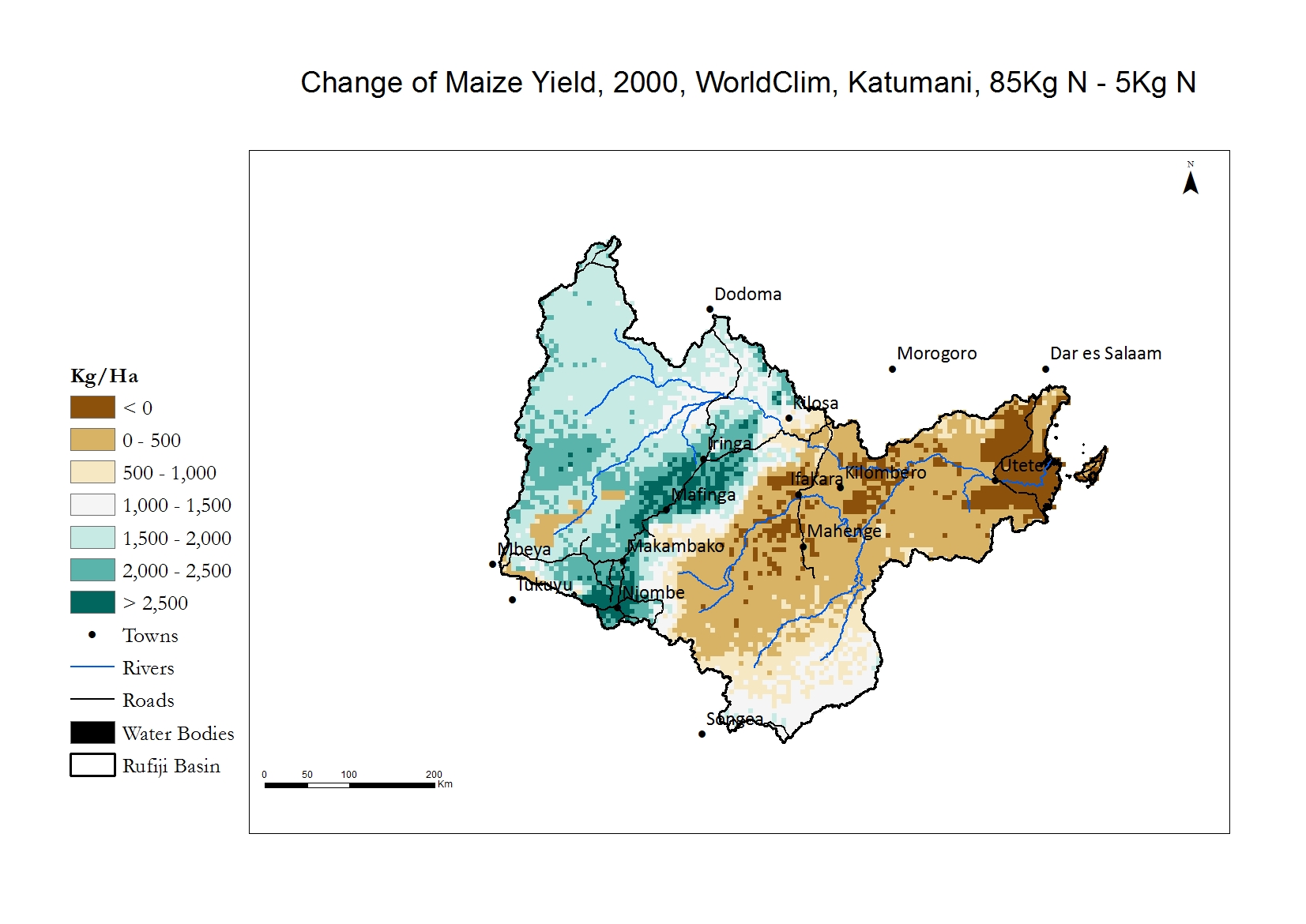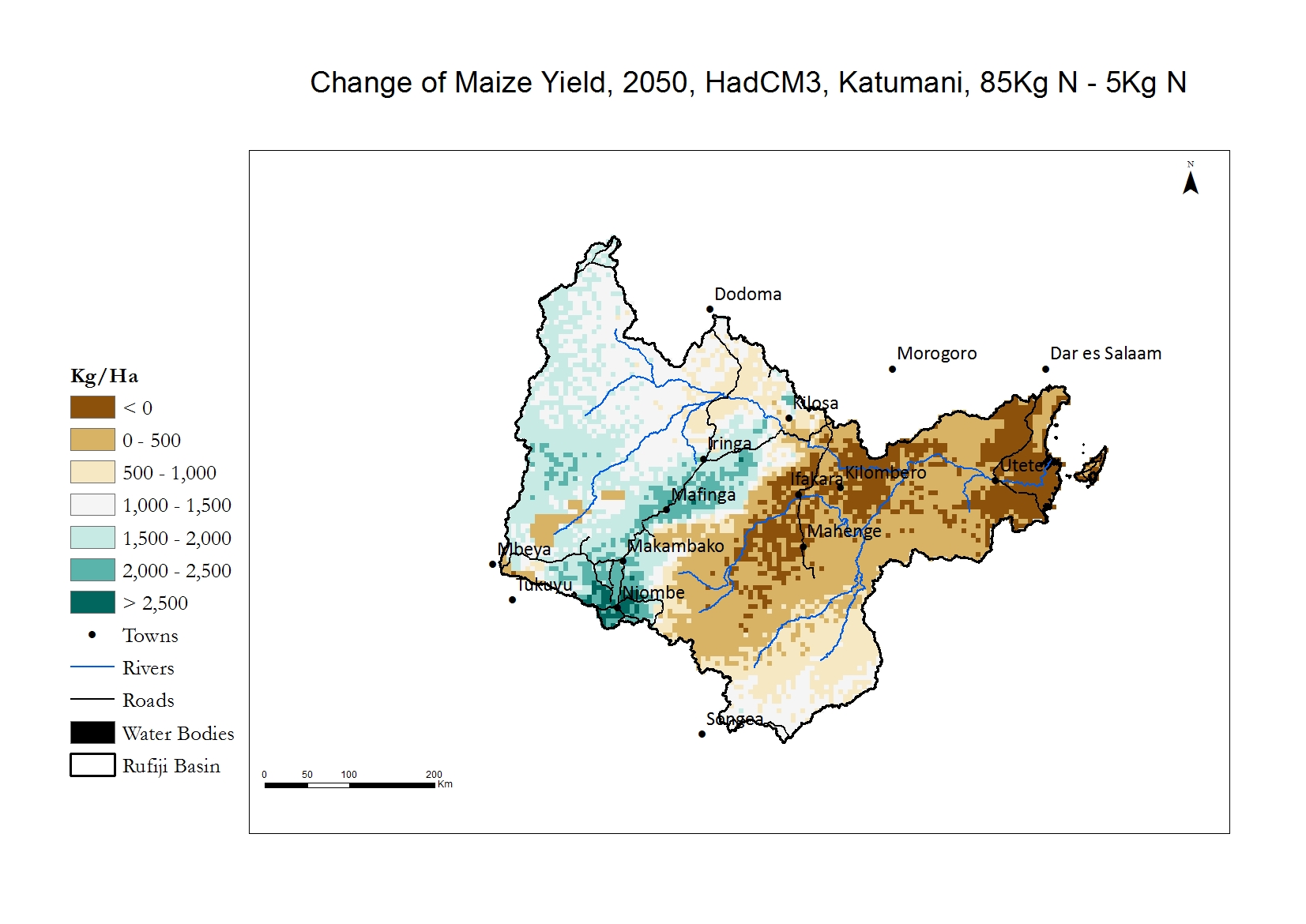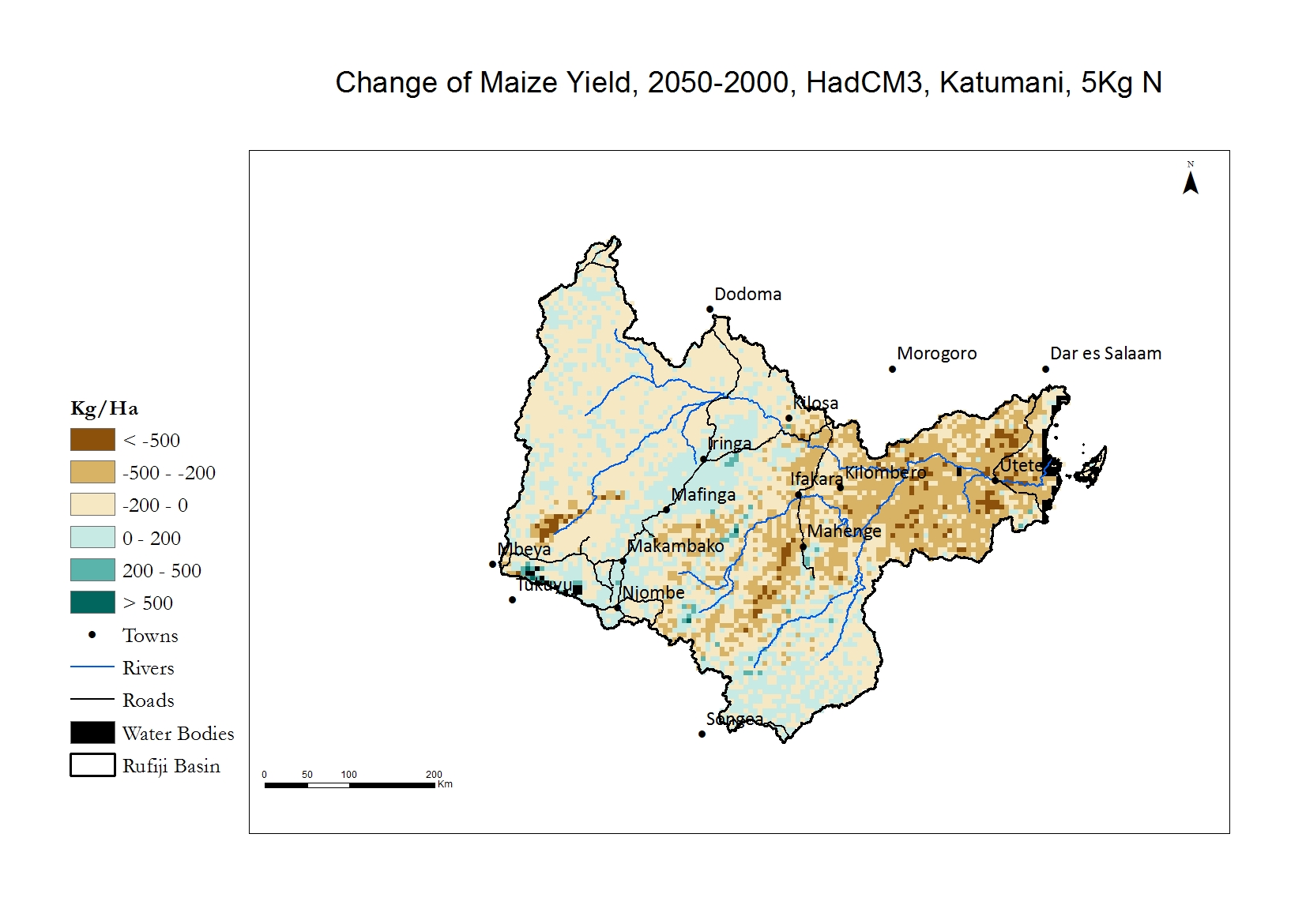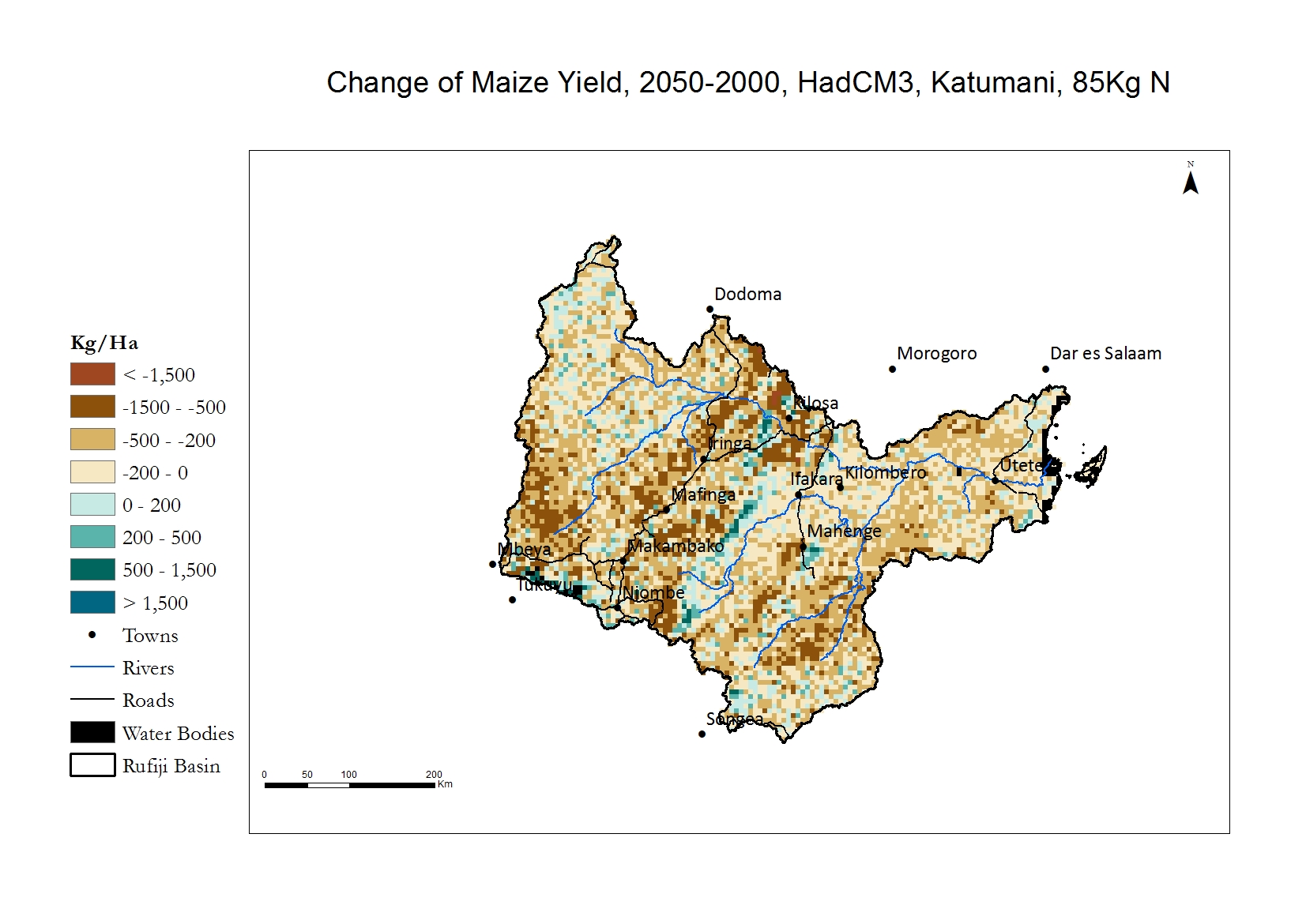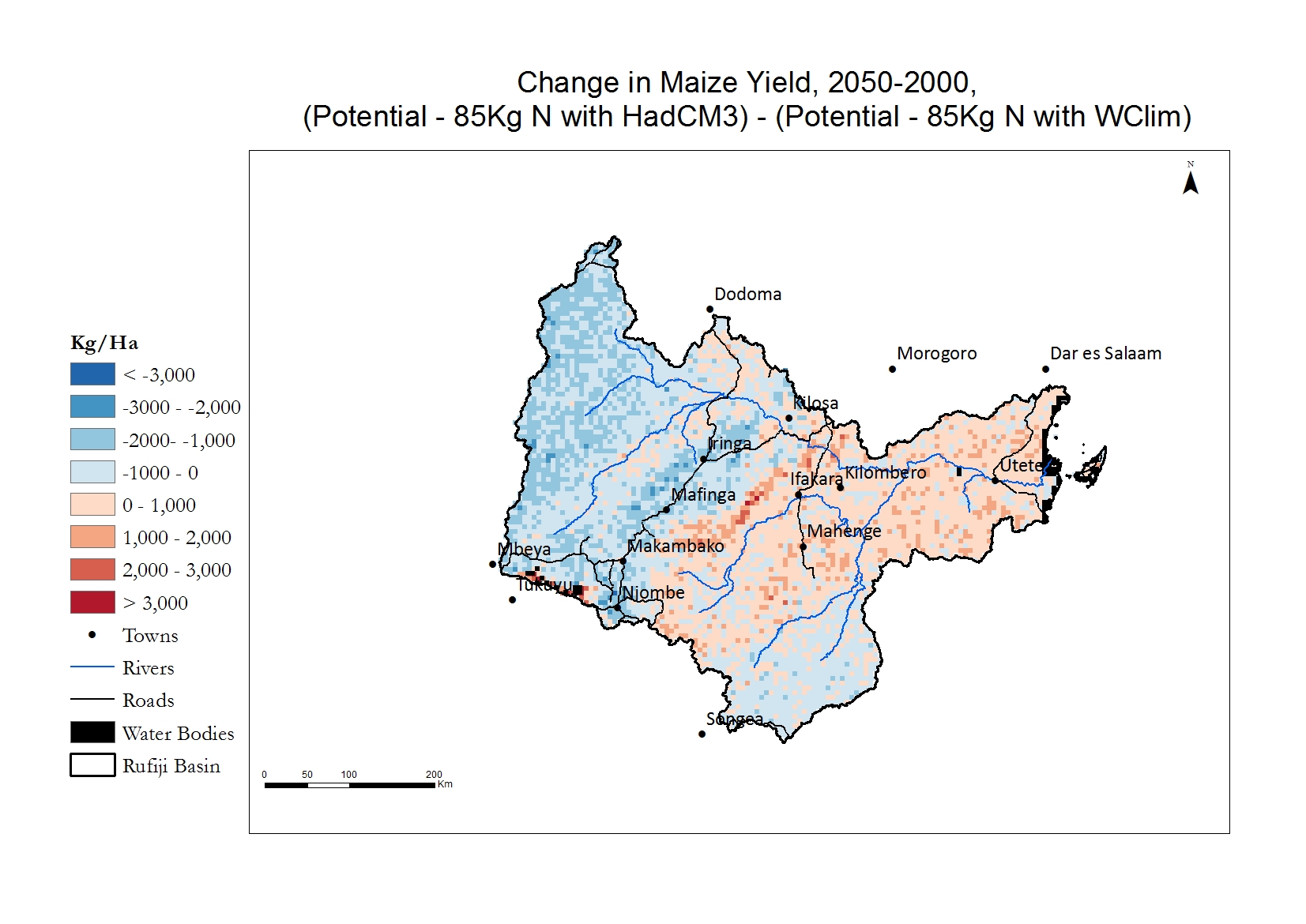Fertilizer Effects
The second important limitation to maize yield in this region is plant nutrients, especially nitrogen and phosphorus. This tool examines the effectiveness of the application of nitrogen (N) fertilizer as an adaptation technology. The simulation of two N application levels are illustrated: one of 5 kg/ha (very low but what many farmers apply) and the other a moderate 85 kg/ha.
Current
The yield with the low fertilizer application remains under 2,000 kg/ha across most of the Basin. Yields are lowest in the warmest area. In contrast, yields reach 2,000 or higher in much of the Highlands and relatively cool area west of the Highlands.
The amount of additional yield obtained with the higher fertilizer application, or the yield gap, is illustrated in the third map. The area gaining the most is in cool, wet Highlands where growing conditions for maize is good and an additional 3,000 kg/ha is obtained with the fertilizer. Where temperatures are too warm, the fertilizer provides a much smaller benefit of under 1,500 kg/ha.
Future - 2050
The dramatic difference in yield between the two fertilizer levels is expected to remain in the future, as illustrated using the HadCM3 GCM. The difference map illustrates the additional yield that would be produced with the higher fertilizer application in the future. The same geographical distribution, of the cooler areas getting a larger benefit from the fertilizer, remains. However, the amount of yield gained is somewhat smaller in the future.
Change
Maize yield is expected to decline in the future under both levels of fertilizer application. The yield loss is smaller with the low fertilizer level, simply because the maize growth is already severely constrained by nutrient deficits and so the warming doesn’t have much impact. With the higher fertilizer level, however, the plants are healthier, and the warming does affect growth. Yields are expected to decline from 200 to over 500 kg/ha across most of the Basin. In the future, the benefits to fertilizer remain significant, however. Improved nutrient management, therefore, would be a good “no regrets” option for adaptation.
Comparison
The sliders illustrate the distribution of yield under current and then under future climate conditions for rainfed and irrigated maize.
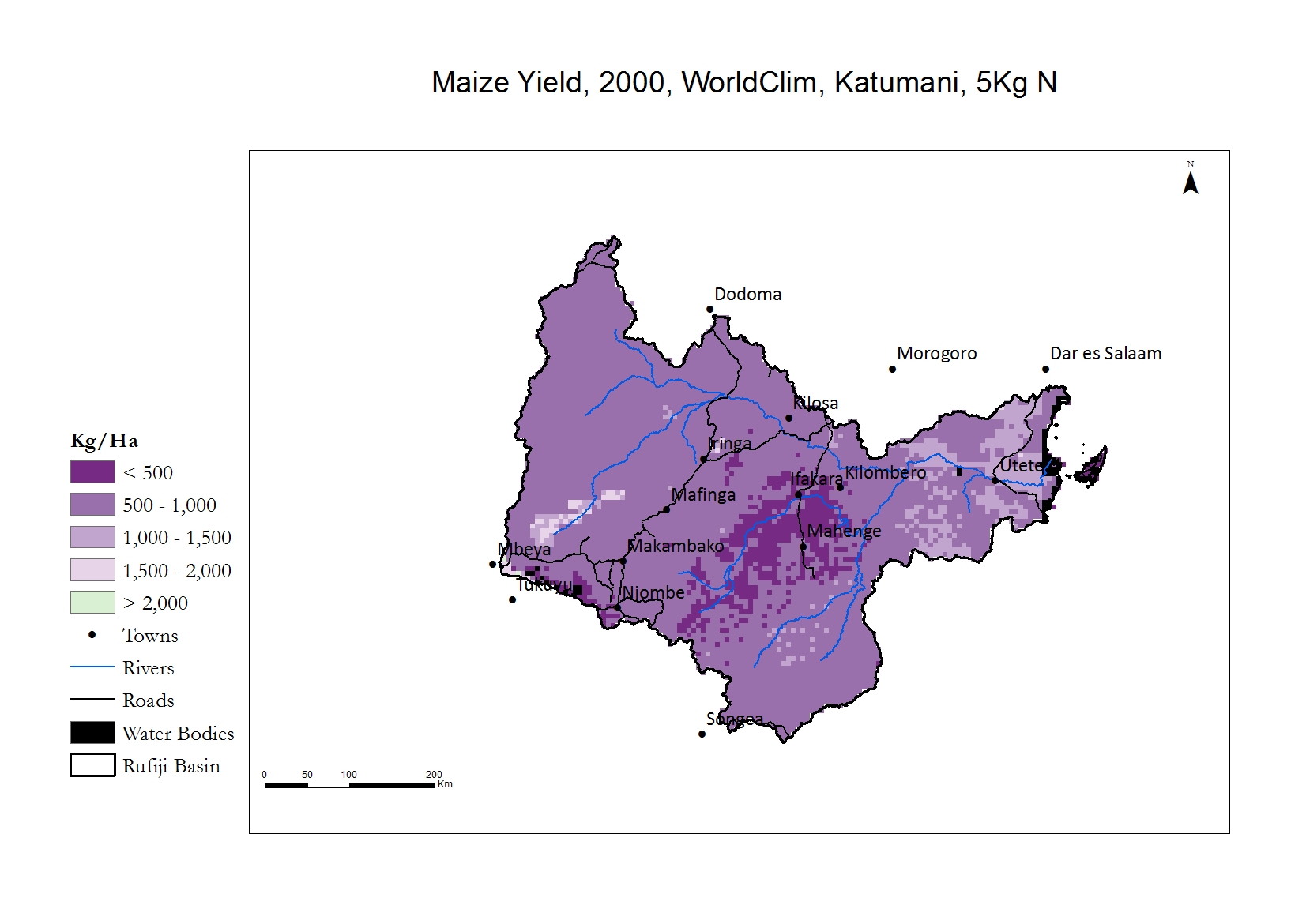 Current
Current

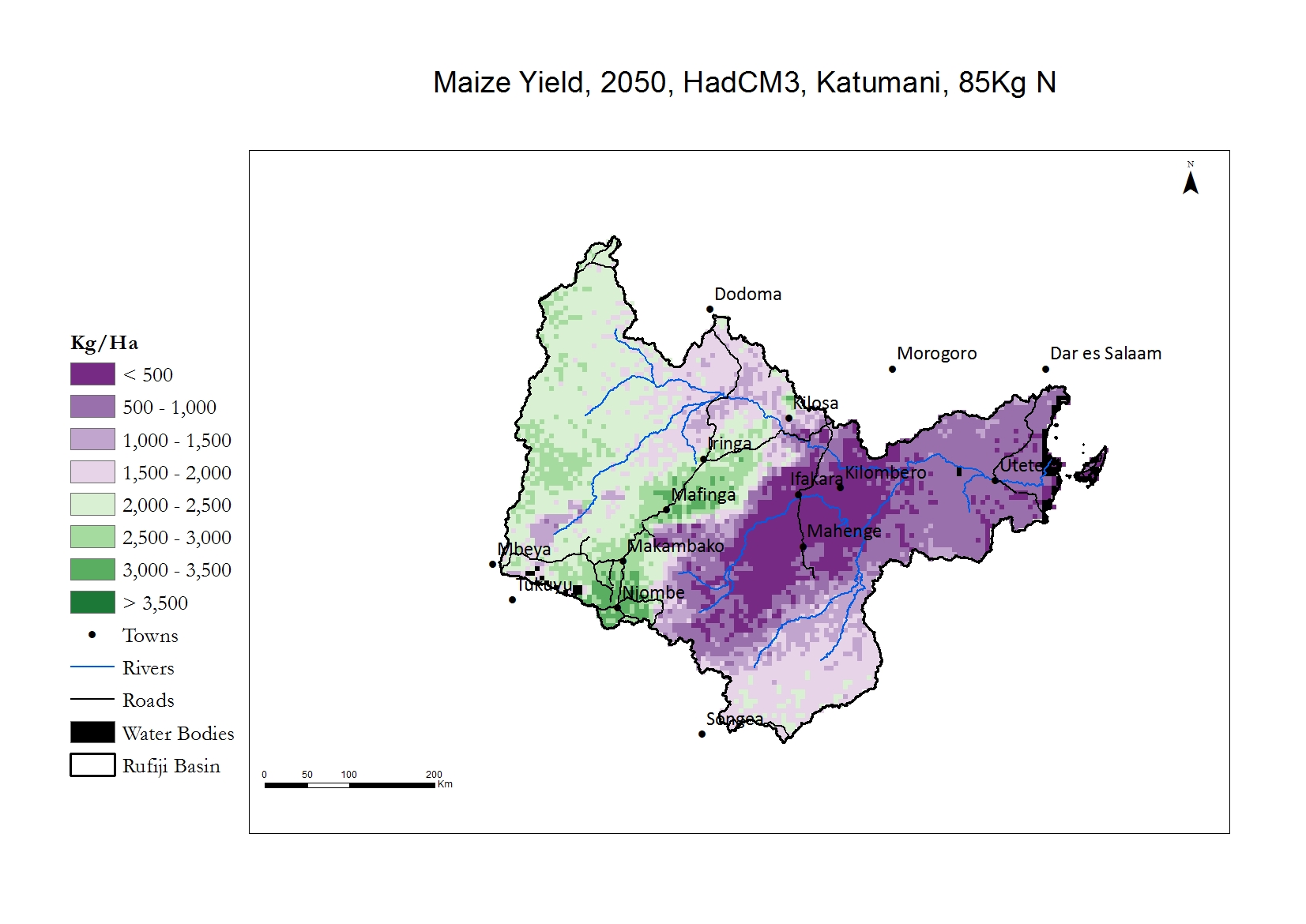
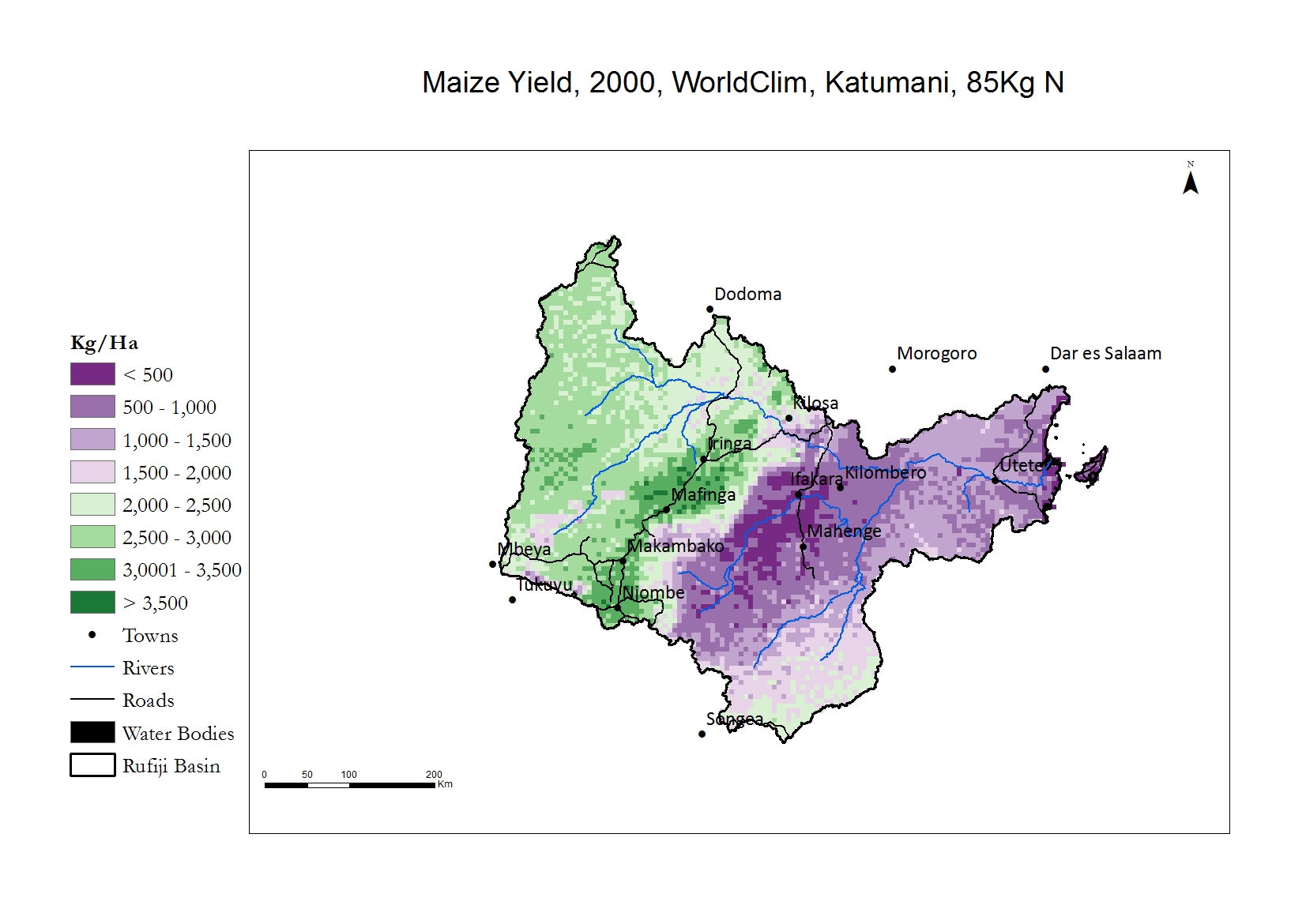 Current
Current
